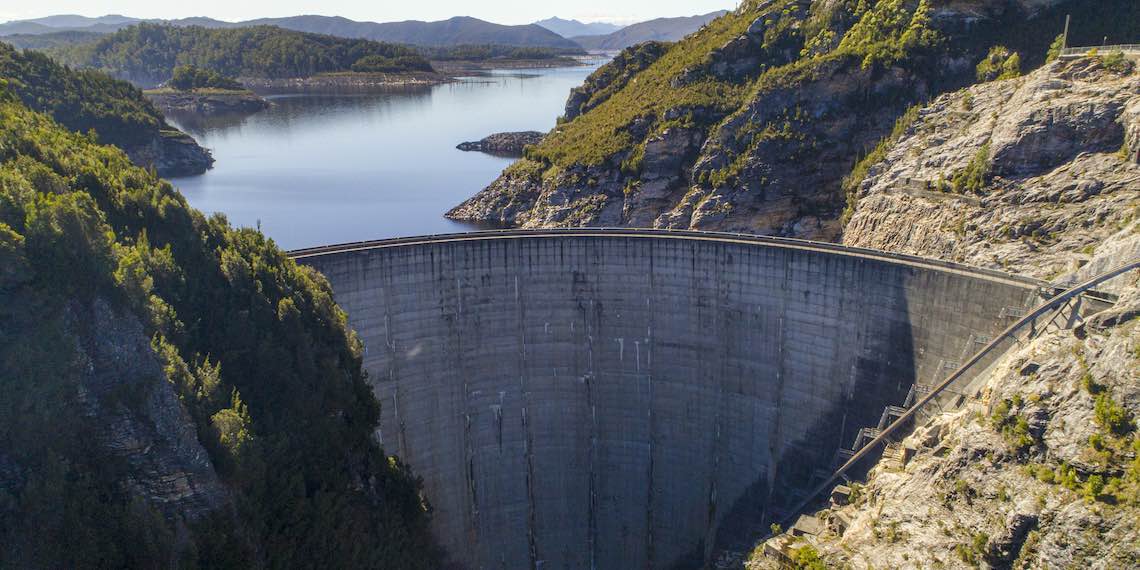Dams at risk under changing climate with ‘probable maximum’ out of date

Probable maximum flood events will significantly increase over the next 80 years, according to a new study from UNSW and the University of Melbourne, indicating that existing dams will be at greater risk under climate change than what is currently assumed.
Published in Water Resources Research, the study calculates that the probable maximum precipitation estimates for 546 large dams across Australia is expected to increase between 14% and 38% on average due to increasing atmospheric moisture.
UNSW Water Research Centre PhD candidate Johan Visser said existing models of probable maximum precipitation have not been updated for at least 20 years, but recent meteorological events show that the climate is warming and making storms more intense and more frequent.
“There are a lot of risks involved with dams given the amount of water they are holding back. Some of the worst floods around the world were due to extreme storms overwhelming a dam, causing it to fail and release a wall of water downstream,” he said.
“Engineers design dams to accommodate the largest flood event that could reasonably be expected to occur at a particular location, known as the probable maximum flood (PMF).
“To work that out, you first need to calculate what is the greatest depth of rainfall meteorologically possible over that area in a certain amount of time, which we call the probable maximum precipitation [PMP].”
Visser said the problem is that PMP calculation is currently based solely on historical data with no consideration for future conditions under a changing climate.
“This means that many large dams constructed decades ago were designed using information representative of a cooler climate,” he said.
“The purpose of this research was to analyse whether PMP estimates have changed over the last six decades and how these estimates might change in the future if we take into consideration a potential increase in atmospheric moisture due to known climate change.”
Incorporating change
Visser said the study is crucial in terms of ensuring dams, whether new or old, are fit for purpose within a changed climate.
“For each 1-degree Celsius rise in temperature, the atmosphere can hold approximately 7% more water,” says Johan Visser.
“We can already see in the observational record that extreme rainfall events and floods are becoming more frequent and more intense.”
The research reanalysed existing meteorological records, added in more up-to-date data from the last 20 years that was not previously included, and calculated potential changes in the future by incorporating the latest climate scenario modelling.
“The observational data shows that atmospheric moisture has been increasing over the historical record, and when you also factor in future climate projections from climate models, then you see that it’s projected to increase even further into the future,” Visser said.
“That is true for all the scenarios we analysed, even the most conservatively low estimates where there’s an increasing shift toward sustainable practices. So, under any future scenario our estimate is that the PMP will increase.”
For the worst-case future scenario, where carbon emissions remain highest through to the year 2100, PMP estimates over large dam locations in Australia could increase by 38% on average.
Conservative estimates regarding emissions and subsequent climate change suggests an average increase in PMP of 13% across Australia.
“That is concerning because, if PMPs are increasing, then our probable maximum flood estimates will also increase,” Visser said.
“Dam owners regularly review the safety performance of their dams under a wide range of failure scenarios, and this research reinforces the importance of ensuring that in the future these reviews consider the implications of a warming climate on extreme floods.
“One of the issues with the methodology presently used to estimate probable maximum rainfalls is that the last time it was updated in Australia was around the late 1990s or early 2000s.
"Therefore, 20 years’ worth of atmospheric moisture and rainfall data is already not included.”
Planning ahead
One of the lead collaborators on the study, University of Melbourne Professor Rory Nathan, said it is hard to make generalised recommendations regarding potential dam infrastructure upgrades across Australia based on the implications of the study.
The location, climate and design of each specific dam varies significantly, and individual risk and cost assessments would need to be done on a case-by-case basis.
“No country in the world has yet updated the operational procedures used to estimate PMPs to account for climate change, and this research provides the first evidence that these procedures need to be reviewed,” Nathan said.
“It will take some time to work out the best way of using these findings to update industry practice, but we are facing a climate crisis and this research adds to the urgency with which we need to curb our carbon emissions.”
Corresponding study author UNSW Professor Ashish Sharma said the findings of this research are important — not just for Australia but also across the world.
“The approach to PMP is developed and recommended by the World Meteorological Organisation and is used more or less consistently by countries around the globe,” he said.
“Anybody who is planning to build a large dam needs to think 50 to 100 years ahead, and this research makes clear that future planning now needs to consider the future impacts of climate change on the plausible upper limit of rainfall extremes.”
The research was supported by a cohort of Australian water organisations, including Melbourne Water, the Murray-Darling Basin Authority, Queensland Department of Natural Resources Mines and Energy, Seqwater, Snowy Hydro, Sunwater, Water Corporation, WaterNSW, the Australian Research Council and Hydro Tasmania.

